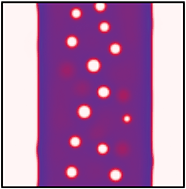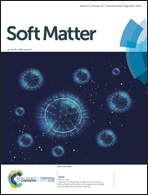Phase separation of mixtures after a second quench: composition heterogeneities
Abstract
We investigate binary mixtures undergoing phase separation after a second (deeper) temperature quench into two- and three-phase coexistence regions. The analysis is based on a lattice theory previously developed for gas–liquid separation in generic mixtures. Our previous results, which considered an arbitrary number of species and a single quench, showed that, due to slow changes in composition, dense colloidal mixtures can phase-separate in two stages. Moreover, the denser phase contains long-lived composition heterogeneities that originate as the interfaces of shrunk domains. Here we predict several new effects that arise after a second quench, mostly associated with the extent to which crowding can slow down ‘fractionation’, i.e. equilibration of compositions. They include long-lived regular arrangements of secondary domains; wetting of fractionated interfaces by oppositely fractionated layers; ‘surface’-directed spinodal ‘waves’ propagating from primary interfaces; a ‘dead zone’ where no phase separation occurs; and, in the case of three-phase coexistence, filamentous morphologies arising out of secondary domains.



 Please wait while we load your content...
Please wait while we load your content...